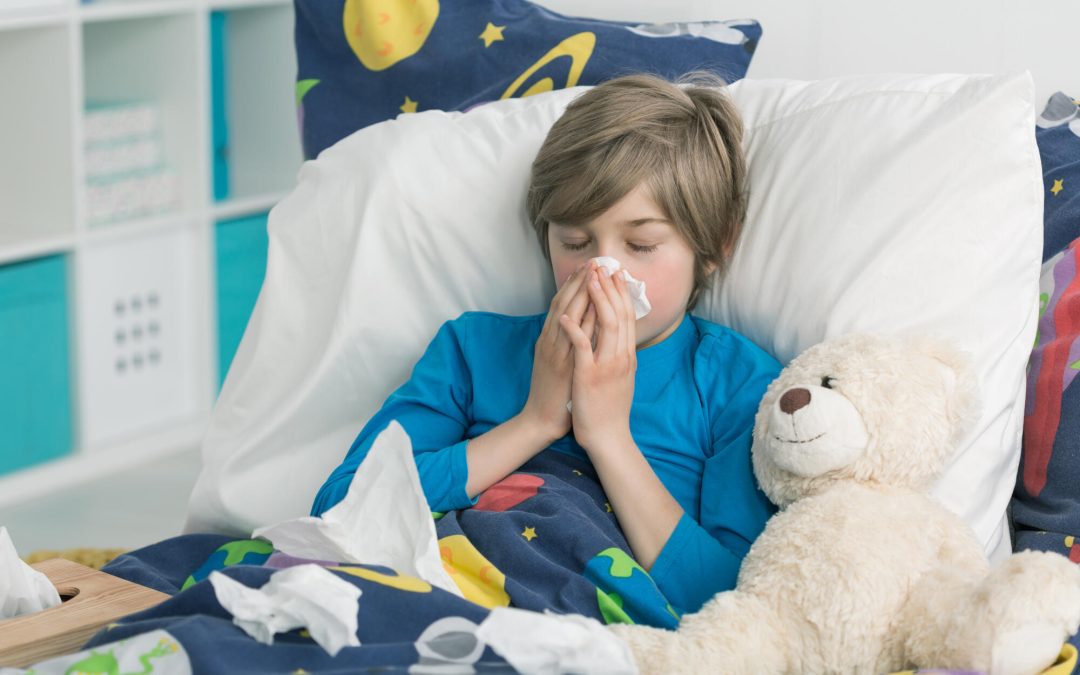The CDC has openly discussed the link between mold in the home and the escalation of asthma symptoms for over 20 years now. In Central Florida’s warm and damp air, be aware that spores can start settling in many areas, including inside ducts and playrooms, not only in the shower. The resulting mold may impact your family and their health more than you expect.
Below, we offer advice to help you recognize and react to mold symptoms in kids that, if left alone, may lead to visits to the doctor. So, keep reading to avoid expensive cleanup, hospital bills, and long-term health issues for your family.
These five warning signs come with useful mold prevention tips and advice on the best service to remove the mold once you find it.
1. Lingering Coughs in Children that Do Not Abate
Mold spores commonly irritate airways in both children and adults and can easily cause a wet or dry cough. However, this illness may hide behind another sickness, such as a cold. As such, if a child gets better from a cold but the cough does not diminish, you may want to look for a secondary factor.
As children breathe faster and closer to the floor, where spores tend to accumulate, it is normal for them to have a higher level of mold exposure. As such, handling the issue may lead to you creating a much safer space for your child.
Be aware that these mold colonies may exist outside the rooms, too. It is common for them to thrive inside HVACs, such as in their evaporator coils, where water tends to accumulate. The spores from these devices will then spread through the house, often into bedrooms, where your child may breathe in those that have not landed throughout the night.
If your child already suffers from asthma, then bear in mind that spore irritation may continue to cause problems for them, even after using an inhaler. As such, if that has less of an effect than usual, then that may be another sign.
2. All-Year Long Stuffed Noses
If your family suffers from chronic congestion, it may be more than a hereditary issue. One of the key pieces of evidence is whether the problem goes away when you travel from home for a weekend trip.
You may also want to watch out for:
- Postnasal drip that prevents sleep
- Antibiotics not having an effect
- Whether the issue occurs all year round
You can test this out by using air purifiers in specific areas of the home to clean up those locations and see if your family feels more comfortable there. Then, getting a more comprehensive test may be sensible.
3. Mystery Rashes
If your family suddenly suffers from red, itchy patches on their skin that standard steroid creams do not handle long-term, check for red and itchy patches on the elbows or behind the knees. These are likely to become more pronounced after rainstorms.
These rashes are a sign of the toxic mold weakening the skin’s defences and causing irritation while potentially allowing secondary infections to occur. The signs can be concerning, so pay attention to them and treat them with the seriousness they deserve.
Also, once you feel you have handled the issue, clean all the clothes in your house and avoid leaving them damp in hampers. These can transfer mold residues and spores around the house, so you may need to be more strict to prevent this moving forward.
4. Fatigued Children and Daily Headaches
Feeling challenged by tiredness throughout the day could be triggered by immune system reactions that flare up due to invisible spores around the home, triggering mold-related allergies. If you smell a musty odor, this may be filled with enough spores to cause severe headaches and fatigue.
Like with other signs, you may notice a significant improvement once your children move somewhere else for a short time. You could also consider asking your teachers to pay attention to whether your child seems to have reduced focus when things get more humid.
5. Slipping Grades and Wild Mood Swings
The difficulties your child is having in school may be due to more than a lack of focus. Similarly, mood swings may have a more direct cause than you otherwise expected.
Instead of discipline issues, check to see if you can improve the air quality in your home. If this leads to a noticeable boost in their grades and confidence, you may need to contact someone to clean up your home.
Reducing the Impact of Child Bedroom Mold
The EPA confirms that, to prevent mold, indoor relative humidity (RH) should remain below 60%. So, use dehumidifiers to reduce the likelihood of this occurring.
However, you should check the dehumidifiers within the room for signs of mold. The filters are the perfect place to do this, as many spores will be caught here, where you can find them easily. If you do, it also means you must wash these to prevent the captured spores from circulating.
The Florida Department of Health also has information on how to clean your home once you have reduced the appearance of mold.
If you continue to have issues, you may want to contact a licensed assessor such as Elite Mold Services to set up spore traps and collect evidence of what you are facing. They can also perform infrared moisture scans of drywall and other areas to reveal where your home has more moisture than it should, which is perfect for mold accumulation.
After determining the mold levels in your home, they can then take action to protect your family and your home from its ravages.
Reduce Mold Symptoms in Kids with a Cleaner Home
The coughs and rashes your children suffer could be something you can prevent. With fast detection and control, even hidden mold can be removed from your home, preventing mold symptoms in kids and making it a much more comfortable place.
While HEPA purifiers and dehumidifiers may help, they often only buy time until you hire a professional service like Elite Mold Services. We offer lab-verified testing and cleanup efforts, and can give your children cleaner air in only a few days. So, contact us today to get the protection you need.

